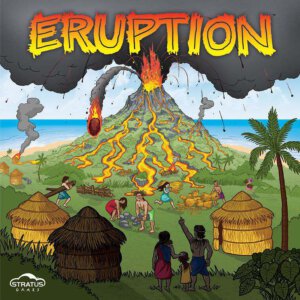
Publisher: Stratus Games
Designer: Chris James
Artists: Andy Kurzen and Matt Plett
Year: 2011
Category: Cooperative tile laying family game
Players: Two to six players
Ages: 10+
Playing Time: 45 Minutes
MSRP: $44.95
From Stratus Games:
The inhabitants of the villages surrounding a dormant volcano were happily living in peace until — KABOOM! — the old volcano sprung back to life, unleashing rivers of molten lava in every direction and blasting volcanic rock into the sky. The villages, now faced with destruction, must do whatever they can to protect their homes from the incoming surge of lava.
Your village is about to burn up — can you take the heat?
You’re living on an island peacefully with some other tribes who annoy you but you do try to get along. There is a volcano in the center of the island, but it hasn’t erupted in a long time and you aren’t too concerned about it. Unfortunately, one day amidst your happy frolicking and catching of crabs, the volcano erupts. You know that everyone can escape by jumping into the boats, so you send the women and children away, but what about your stuff? Hey villages don’t grow on trees.
You quickly begin building walls around the village in an attempt to protect what you hold dear. That coconut sculpture has been part of the village for generations, and what about the stage where you put on all your village theater shows?
As you build up walls from straw, wood and stone to protect the village, it occurs to you that you might be able to send some of the lava flows away from your village and toward one of the other tribe’s villages. It would be 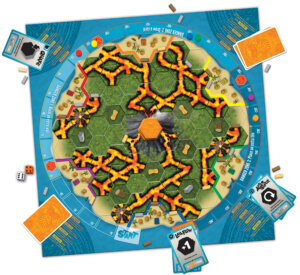
With a gleam in their eyes, the villagers get to work.
Thus begins the saga of Eruption from Stratus Games. Each player is given control of one of the villages marked on the outer edge of the board. It is your job to protect the village from burning up as long as you can, while trying to get the other player’s villages to burn. The center of the board contains an erupting volcano, and the rest consists of hexagon spaces where players will place lava flow tiles to direct the lava around the board.
The outer edge of the board has a temperature track where every player places their colored wooden token. Each turn, you will check the area around your village to see if any lava flows are coming in. There are seven possible sides to each village that a lave flow can enter. For each unblocked flow, the temperature of the village goes up by 20 degrees. If you have a wall blocking a lava flow you have to roll the dice. The orange die represents the lava and the white die is the wall. If the wall wins the roll, then the temperature stays the same and the wall is fine. If the lava wins or ties on the roll then the wall is destroyed and the temperature goes up by 10 degrees. You move your token up the temperature track on the board in 10 degree increments. The first player to hit the end of the temperature track has their village burn to cinders, and the player with the lowest temperature in their village wins the game.
Your turn continues by drawing and placing a lava tile from the stack in the center of the board. The tile must connect to existing lava flows on all sides that have lava, so in other words it has to look right and connect to the surrounding tiles.
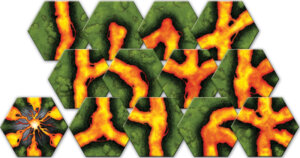
There are three danger zones on the temperature track, and as a player reaches them they get an additional benefit on their turn, which is cumulative across all three zones. In zone one, the player gets to place an extra wall on their turn. In zone two, you get to draw a card, and in zone three you get to draw and place an extra tile. You only get these benefits as the temperature in your village rises, so it is a way to keep yourself in the game as the other players force your village to get hotter and hotter. The first player to reach a danger zone also gets to place a special eruption tile anywhere on the board. This is a whole new source of lava that can even be placed right next to another player’s village.
The last thing you can do on your turn is place a wall. The most important suggestion that I can make is to forget the fact that you are building walls of straw and wood to stop a flow of lava. That is absolutely ridiculous and blows the whole theme of the game. As Jeff mentioned on the podcast, I can’t believe they want you to buy into the wall of straw idea. Here is what I want you to do. Tell the other players that the yellow walls are walls made from sand, not straw. A big damp wall of sand could fare a bit better against a lava flow than a wall of straw. The wall of wood is really a wall of earth braced by wood. Ok, the walls make more sense now.
The components of the game are nicely done. There are wooden walls and tokens, the tiles are sturdy and the board is 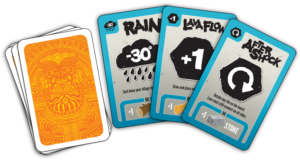
This is a family game. Don’t expect to sit around with your gamer buddies playing Eruption. It is light with lots of “Take that!” play. Don’t try playing with the younger kids who will get upset if you send the lava their way, but a game night playing Eruption with the wife and older kids is a lot of fun. They always try to gang up on me, but with the added danger zone bonuses I was able to keep fighting until the bitter end. Personally, I think the game should end right when a player hits the last space on the burn track, but as it is written the players get one final turn. The game adapts well for more players, because the number of tiles is the same regardless of the number of players.
I did enjoy playing Eruption, as did my family. I recommend the game for a spot on your family game night shelf.
[rwp-review id=”0″]
- A Dungeon Delve for Kids?: A Review of Dungeon! - Oct 24, 2022
- Better, Stronger, Faster | Descent: Journeys in the Dark Second Edition Reviewed - Oct 23, 2022
- Your Planet is Doomed!: Invasion from Outer Space Reviewed - Oct 22, 2022


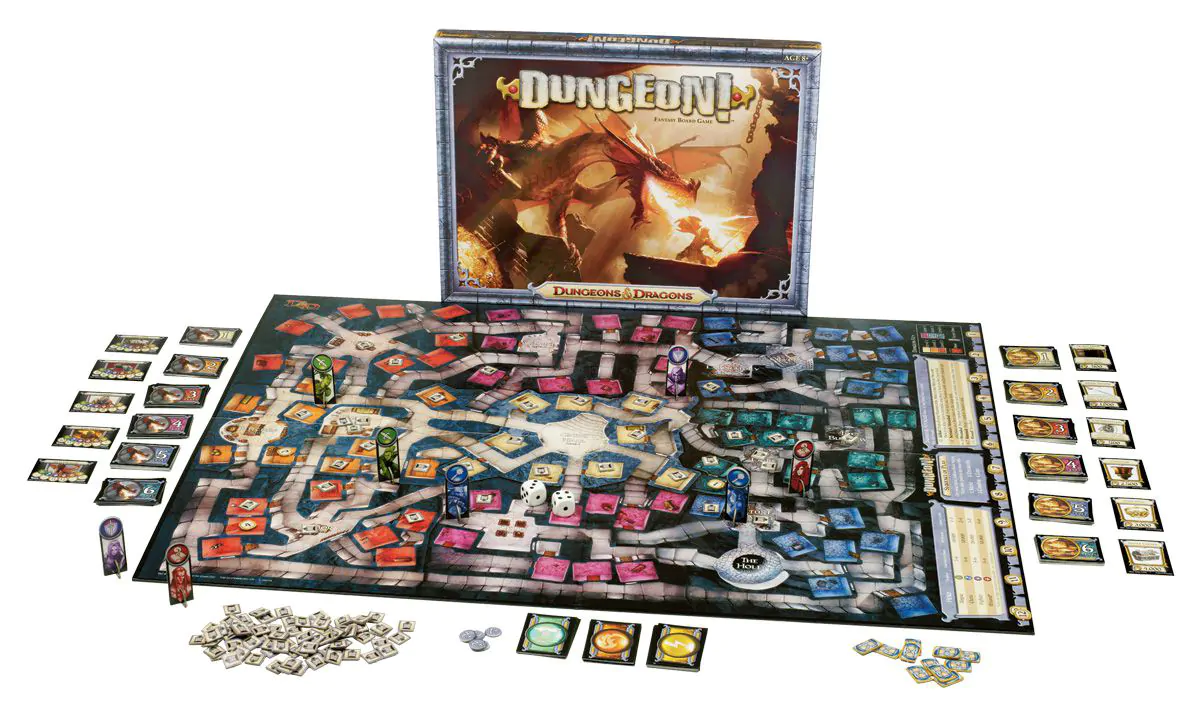
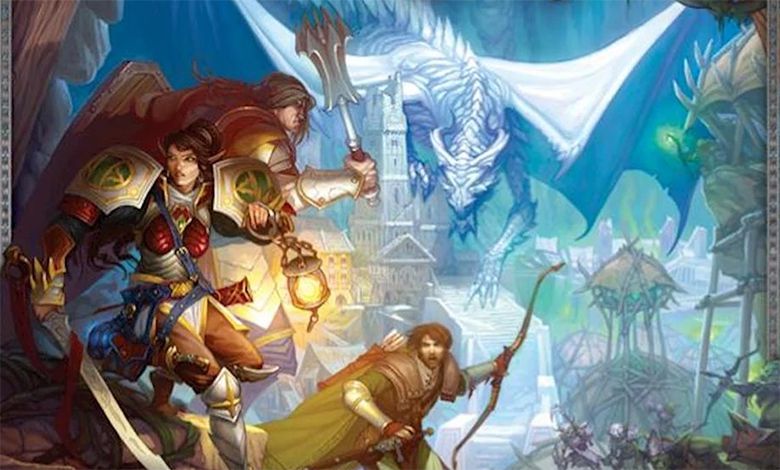
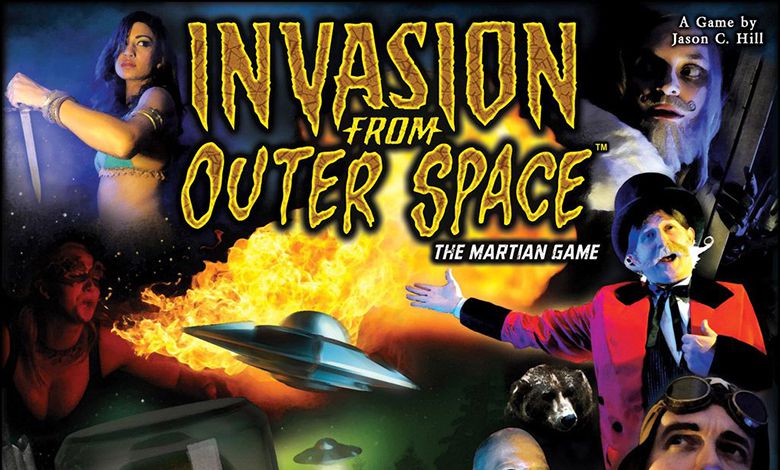
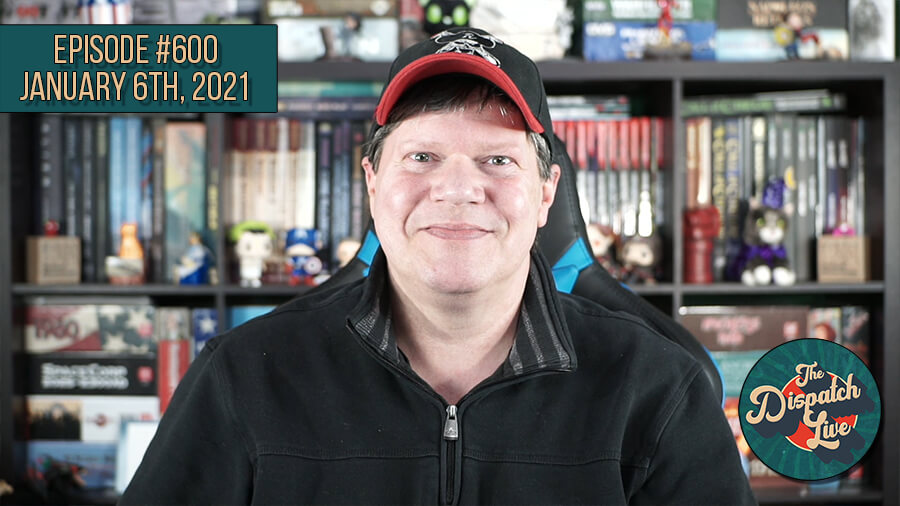





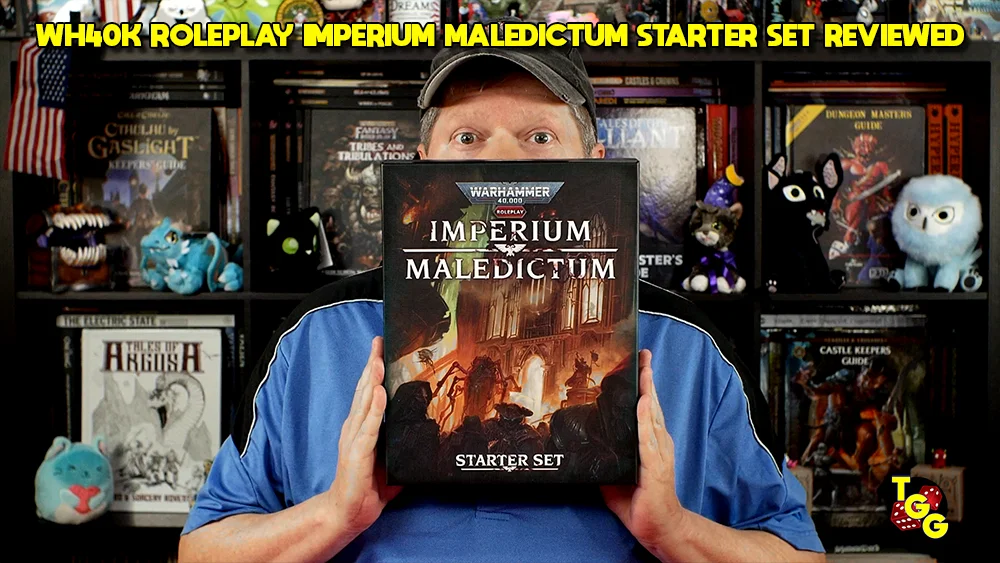


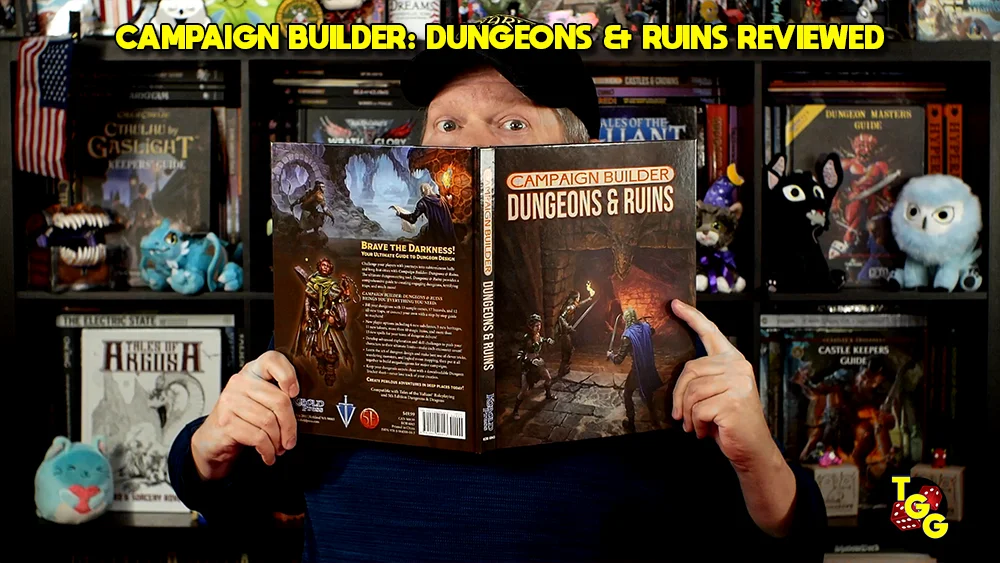



Obviously, those who listened to my review on the podcast know I wasn’t as big a fan of Eruption as Elliott is. All in all though, my bud is really more expert in judging family games than I am so I’m say his assessment is very fair.